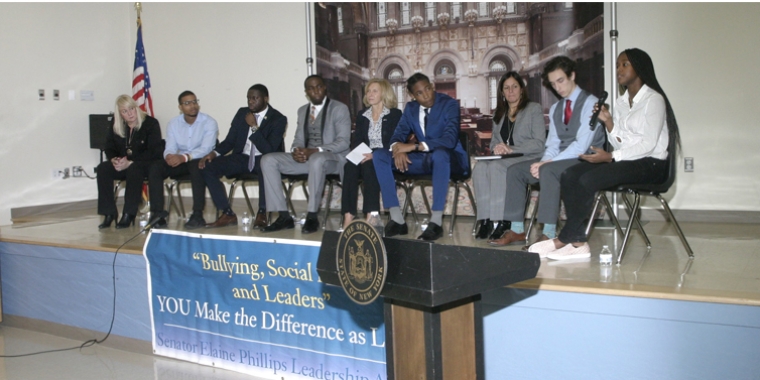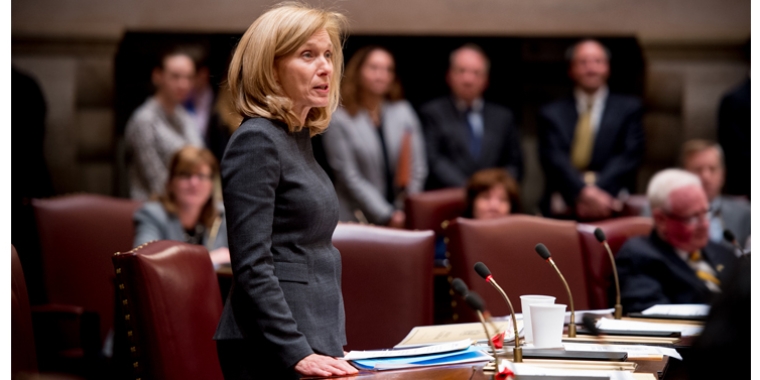
Senator Phillips Announces Senate Approves $1 Million Investment To Combat Lyme Disease Across New York State
June 22, 2018

Senator Elaine Phillips announced today that the New York State Senate has approved a resolution to provide a record $1 million to help fight the scourge of Lyme and other tick-borne diseases (TBDs) throughout the state. The new funding will help support a wide variety of local investments identified by the Senate’s Task Force on Lyme and Tick-Borne Diseases to increase education, research, prevention, and treatment options, and combat the ongoing increase in TBDs throughout New York.
“With an increased tick population across Long Island and the state, this funding is critical to support local investments that will help combat rising cases of Lyme and tick-borne diseases,” said Senator Phillips, a member of the Senate’s Task Force on Lyme and Tick-borne Diseases. “To properly fight these diseases, we must continue supporting organizations that perform improved research, while also promoting awareness and working to prevent future cases.”
The Senate Majority – and specifically the Task Force – led the charge in securing this historic level of funding in the 2018-19 state budget. Based on the Task Force’s recommendations, the final budget restores $400,000 in Executive Budget cuts and includes $600,000 in new funding for a total of $1 million.
Highlights of the resolution passed today include:
- Cary Institute of Ecosystem Studies, Inc. – $192,000 to research community-based prevention methods by continuing and expanding “The Tick Project,” a five-year research project. The funding will help determine whether neighborhood-based prevention can reduce human cases of Lyme and other TBDs.
- Stony Brook University – $175,000 to open a state-of-the art infectious disease laboratory, which will have an insectary dedicated solely for work on ticks. The laboratory will be open to Stony Brook scientists and others as a regional facility with unique research capabilities. The funds will be used to support activities in the laboratory and new research on TBDs.
- Cornell University – $130,000 to study the distribution of ticks and the diseases they carry in various parts of the state through the Tick Outreach and Surveillance Project for New York. Run through the New York State Integrated Pest Management (IPM) Program at Cornell University, the research will primarily focus on the spread of ticks by species within certain counties. Other areas of study include ways to reduce human exposure to TBDs, tick management workshops, and best practices in schools, camps, parks, and places where people gather outdoors.
- New York State Association of County Health Officials (NYSACHO) – $112,000 to increase public awareness throughout New York through eight to 10 regional educational lectures. The informational seminars will focus on community awareness, best practices for TBD investigation, tick surveillance, and disease prevention to local parts of the state heavily impacted by the effects of Lyme and TBDs.
- New York State Department of Health – $25,000 to continue database mining, which would include various projects associated with Lyme carditis, as well as deaths associated with Lyme and other TBDs.
- New York State Department of Health – $60,000 to increase the number of tick collection sites in New York, and the number of ticks tested for pathogens statewide. The funding will also be used to hire temporary staff to assist with sampling and testing, as well as targeting of educational messages in a more efficient manner.
- Southampton Hospital – $75,000 to fund the Tick-Borne Disease Resource Center, which helps doctors in multiple disciplines collaborate with researchers and community outreach experts to inform and treat individuals from across the region.
- SUNY College of Environmental Science and Forestry – $50,000 to monitor seasonal variations of ticks in Western and Central New York to help provide a better understanding of how disease transmission risks are changing. The study will also provide public information to better explain the risks of tick exposure.
- Paul Smith’s College – $30,000 to study the emergence of TBDs in the North Country by continuing and expanding academic studies that monitor ticks and TBDs.
- Cornell Cooperative Extension – $26,000 for a series of regional Lyme and TBD forums to be hosted throughout the state. The forums will help provide the public with information on tick identification, tick bite prevention, Lyme disease and co-infection awareness, impact on pets and livestock, and health resources that are available for individuals who have been bitten by a tick.
- SUNY Adirondack – $100,000 for laboratory research on lesser-known TBDs, including infectious diseases known to be comorbid with Lyme disease, such as Babesia, Bartonella, Ehrlichia, Anaplasma, and Powassen virus. The work would help provide much needed information about the rates of these coinfections in people with Lyme disease in New York.
- Town of Shelter Island – $25,000 to help combat the spread of ticks on Shelter Island, which is one of the worst hit areas of the public health crisis. The town has developed a four-poster program to stem the spread of ticks associated with the deer population. The town has built and installed four-poster stations, to remove ticks from deer across the Island, and this funding would maintain and expand the efforts of this critical initiative.
In addition to the $1 million announced today, the Senate was instrumental earlier this year in passing a package of bills aimed at combating Lyme and TBDs, based on the recommendations of the Senate’s Task Force on Lyme and Tick-Borne Diseases.
###
Share this Article or Press Release
Newsroom
Go to NewsroomSenator Elaine Phillips Attends “Veterans Stand Down” Event
November 22, 2017

Senator Elaine Phillips Hosts Leadership Academy
November 20, 2017


